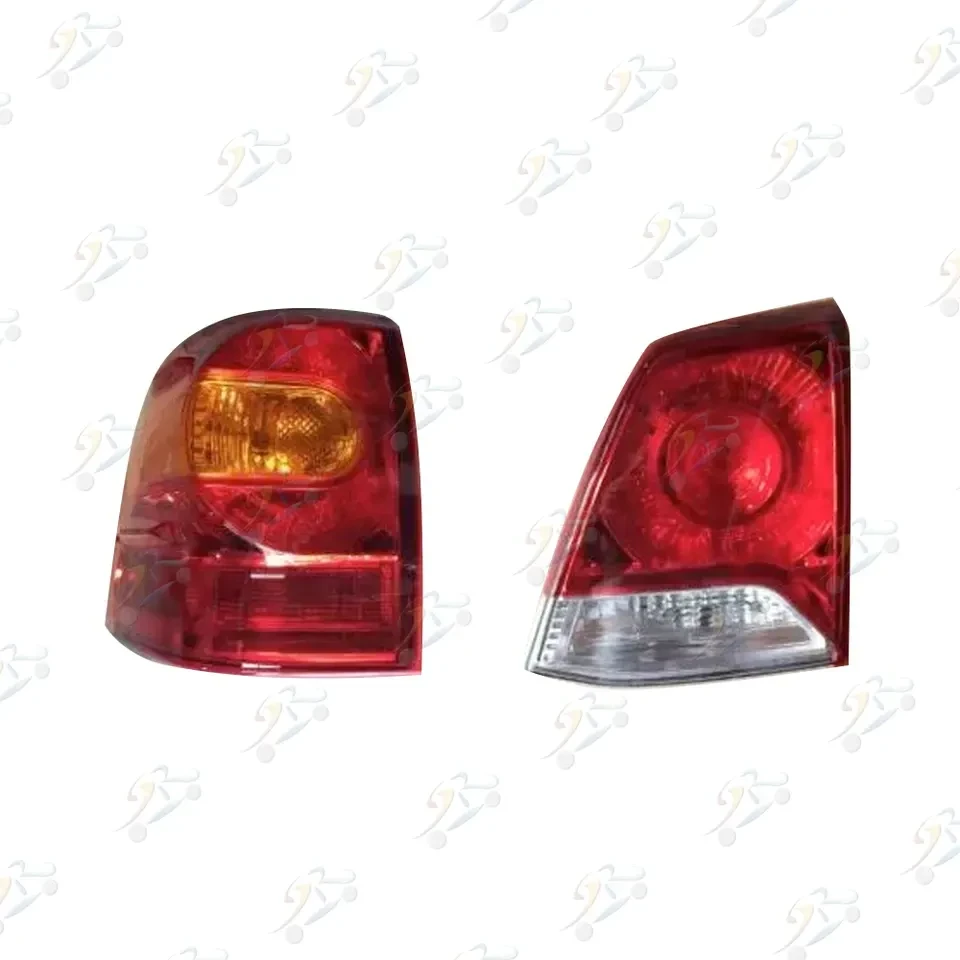

Tail lights are more than just aesthetic features on a vehicle; they are critical components that ensure safety on the road. Properly functioning tail lights not only illuminate the rear of the vehicle but also signal intentions to other drivers, especially in low visibility conditions. In this article, we delve into the essential safety and legal considerations for Land Cruiser tail lights, emphasizing the importance of compliance with regulations to enhance road safety.
A. Brightness Requirements
Tail lights must meet specific brightness standards to ensure they are visible to other drivers in various conditions. Regulations typically mandate a minimum intensity of illumination, measured in candelas, to ensure adequate visibility from a certain distance. For instance, in many regions, tail lights must emit a minimum of 100 candelas under normal operating conditions.
Brightness standards vary across jurisdictions, with some areas requiring higher intensities for vehicles operating in adverse weather or low-light conditions. Compliance with these standards is crucial as insufficiently bright tail lights can reduce visibility, increasing the risk of rear-end collisions.
B. Color Requirements
The color of tail lights is strictly regulated to ensure uniformity and clarity in signaling. Red is the most common color for tail lights as it signifies braking and stopping. Amber or yellow lights are often used for turn signals and hazard indicators. These colors are standardized to facilitate quick recognition of a vehicle’s intentions by other drivers.
Deviation from prescribed colors can lead to confusion on the road and may result in legal penalties. Therefore, it is essential for vehicle owners to replace tail lights with units that adhere to these color regulations, ensuring compliance with local traffic laws.
C. Placement and Configuration
Proper placement and alignment of tail lights are critical for effective signaling and visibility. Regulations specify the precise location where tail lights should be mounted on a vehicle to maximize their visibility to other road users. Typically, tail lights must be positioned at the rear corners of the vehicle at a certain height above the ground.
Additionally, there are guidelines concerning the spacing between tail lights and their alignment angles to ensure they are visible from different perspectives. Proper configuration of tail lights not only enhances safety but also ensures compliance during vehicle inspections and registration processes.
D. ODM Compliance Considerations
Original Design Manufacturer (ODM) standards play a significant role in the design and manufacturing of automotive lighting, including tail lights. ODM compliance ensures that tail lights meet stringent quality and performance criteria set by the vehicle manufacturer. These standards encompass factors such as durability, weather resistance, and optical performance.
Vehicle owners replacing tail lights should prioritize ODM-compliant units to maintain the vehicle’s integrity and safety. Non-compliant aftermarket tail lights may not meet ODM specifications, potentially compromising vehicle safety and legality. Therefore, choosing ODM-compliant replacements is essential for ensuring optimal performance and legal compliance.

A. Visibility and Road Safety
Non-compliant tail lights pose significant risks to road safety, primarily due to reduced visibility. Tail lights that do not meet brightness or color standards may be less visible to other drivers, especially during nighttime or inclement weather. This can lead to rear-end collisions or other accidents where signaling intentions is crucial for safe driving.
Moreover, improperly aligned or poorly positioned tail lights may not provide adequate coverage, creating blind spots and reducing the vehicle’s overall visibility. Such issues can compromise the driver’s ability to communicate intentions effectively, thereby increasing the likelihood of accidents on the road.
B. Legal Consequences
The legal ramifications of non-compliant tail lights vary by jurisdiction but generally involve fines, citations, or even vehicle impoundment in severe cases. Law enforcement agencies routinely conduct inspections to ensure vehicles comply with lighting regulations, including tail lights. Vehicles found with non-compliant tail lights may be deemed unfit for road use until the issues are rectified.
Additionally, insurance claims resulting from accidents involving non-compliant tail lights may be contested or denied, as vehicle modifications that violate regulations can void insurance coverage. Therefore, maintaining compliant tail lights not only enhances safety but also mitigates legal and financial risks associated with non-compliance.
A. Official Regulations
To assist vehicle owners in understanding and complying with tail light regulations, official resources provide detailed information on legal requirements. Government websites and traffic safety authorities publish comprehensive guides outlining specific regulations governing tail lights, including brightness, color, and placement criteria.
These resources empower vehicle owners to verify local laws and regulations concerning tail lights, ensuring they adhere to legal requirements. Regularly consulting official guidelines helps vehicle owners stay informed about updates or changes in regulations that may affect their vehicles’ compliance status.
In conclusion, maintaining compliant tail lights on your Land Cruiser is essential for ensuring road safety and legal compliance. By adhering to brightness, color, placement, and ODM standards, vehicle owners can enhance visibility, communicate intentions effectively, and avoid legal repercussions. Understanding the safety implications of non-compliant tail lights underscores the importance of prioritizing safety in vehicle maintenance practices.
For more information on tail light regulations specific to your region, visit your local traffic authority’s website or consult official guidelines. Remember, compliant tail lights not only contribute to safer roads but also protect you from unnecessary legal penalties and insurance complications. Stay informed, stay safe, and drive responsibly with properly functioning tail lights on your Land Cruiser.
Email format error
Email cannot be empty
Email already exists
6-20 characters(letters plus numbers only)
The password is inconsistent
Email format error
Email cannot be empty
Email does not exist
6-20 characters(letters plus numbers only)
The password is inconsistent